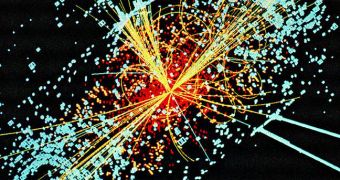The European Organization for Nuclear Research (CERN) announces that all the discoveries made at its Large Hadron Collider (LHC) particle accelerator will be presented during a series of major summer conferences, that began today, July 21, in Grenoble, France.
A press conference to sum up all the findings will be held on Monday, July 25. All of the three main experiments on the particle accelerator will be presenting scientific papers, alongside the smaller experiments with which they share the 27-kilometer facility.
These results represent the work that the 3,000+ physicists working on the world's largest physics experiments put forth in 2011. Officials at CERN are extremely pleased with the amount of science that was conducted at the LHC in just seven months, AlphaGalileo reports.
“So far we’ve collected as much data as was planned for the whole of 2011 and that’s already a great achievement for the LHC. While it’s still too early for the biggest discoveries, the experiments are already accumulating interesting results,” CERN director general Rolf Heuer said.
One of the primary focuses of study is the Standard Model. Many of the processes that are included within are still understood only superficially, and experts are expected to present more precise measurements of some of the most basic phenomena the model contains.
Physicists are also expected to publish new measurements and limits on phenomena and particles the accelerator was constructed to study. These include the Higgs boson, which the Standard Model holds to be the elementary particle that allows energy to acquire mass.
“Discovery or exclusion of the Higgs particle, as predicted by the Standard Model, is getting ever closer,” explained Sergio Bertolucci, who is the CERN director for Research and Scientific Computing.
“Both occurrences will be great news for physics, the former allowing us to start the detailed study of the Higgs particle, the latter being the first proof of the incompleteness of the Standard Model, requiring new phenomena to be happening within the reach of the LHC,” the official added.
ATLAS spokesperson Fabiola Gianotti said that the Worldwide LHC Computing Grid – which routinely processes around 200,000 physics analysis jobs at the same time – is beginning to prove new insights into the available mass range where the Higgs particle could exist.
The number of regions where the boson may be hiding is being constantly narrowed down, and experts around the world are convinced that the next couple of years will either confirm or infirm its existence.
“The LHC experiments are getting closer and closer to pinning down whether these are real signals or not. In particular, LHCb is now surpassing the sensitivity of previous experiments on some key measurements in b-quark physics and is rapidly closing in on others,” concluded Pierluigi Campana, a spokesperson for the LHCb experiment.

 14 DAY TRIAL //
14 DAY TRIAL //